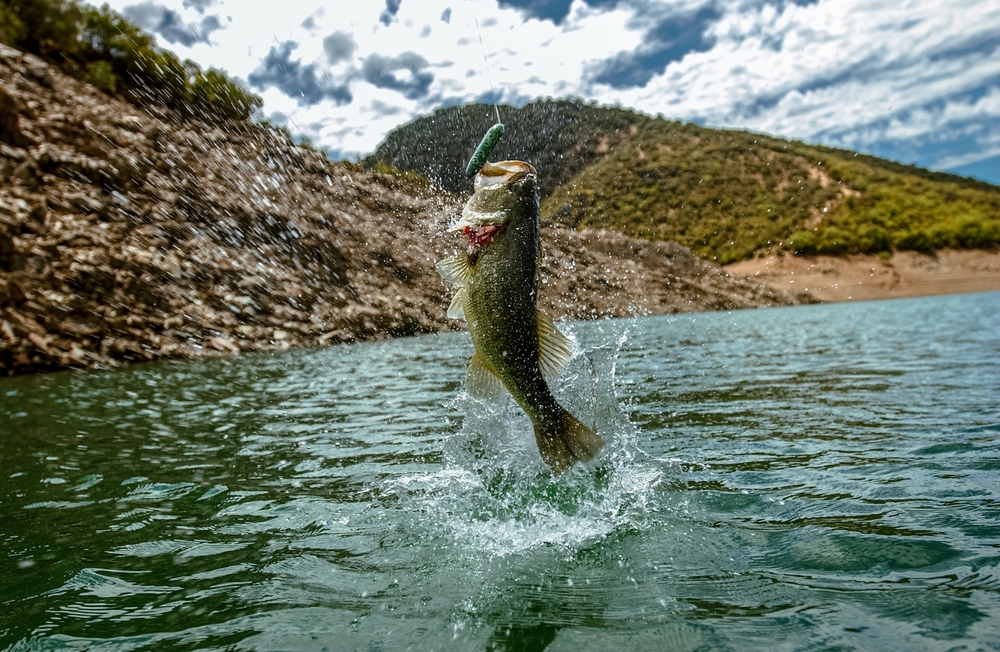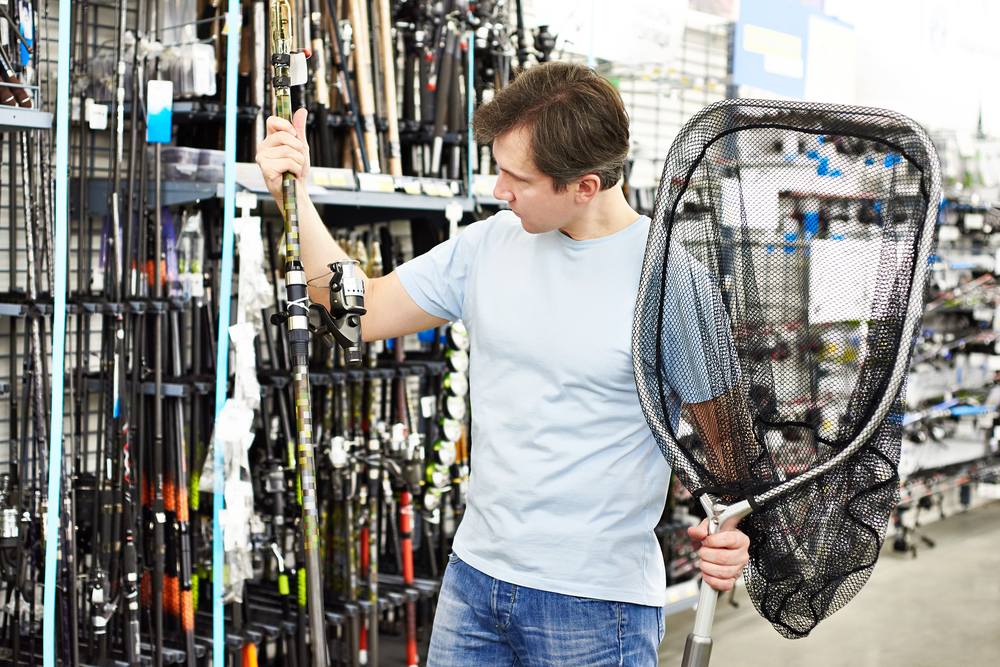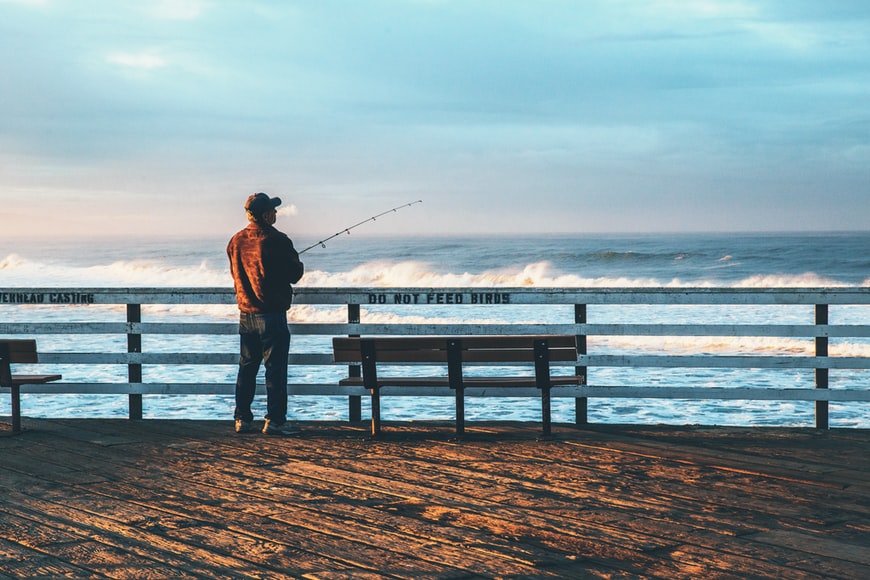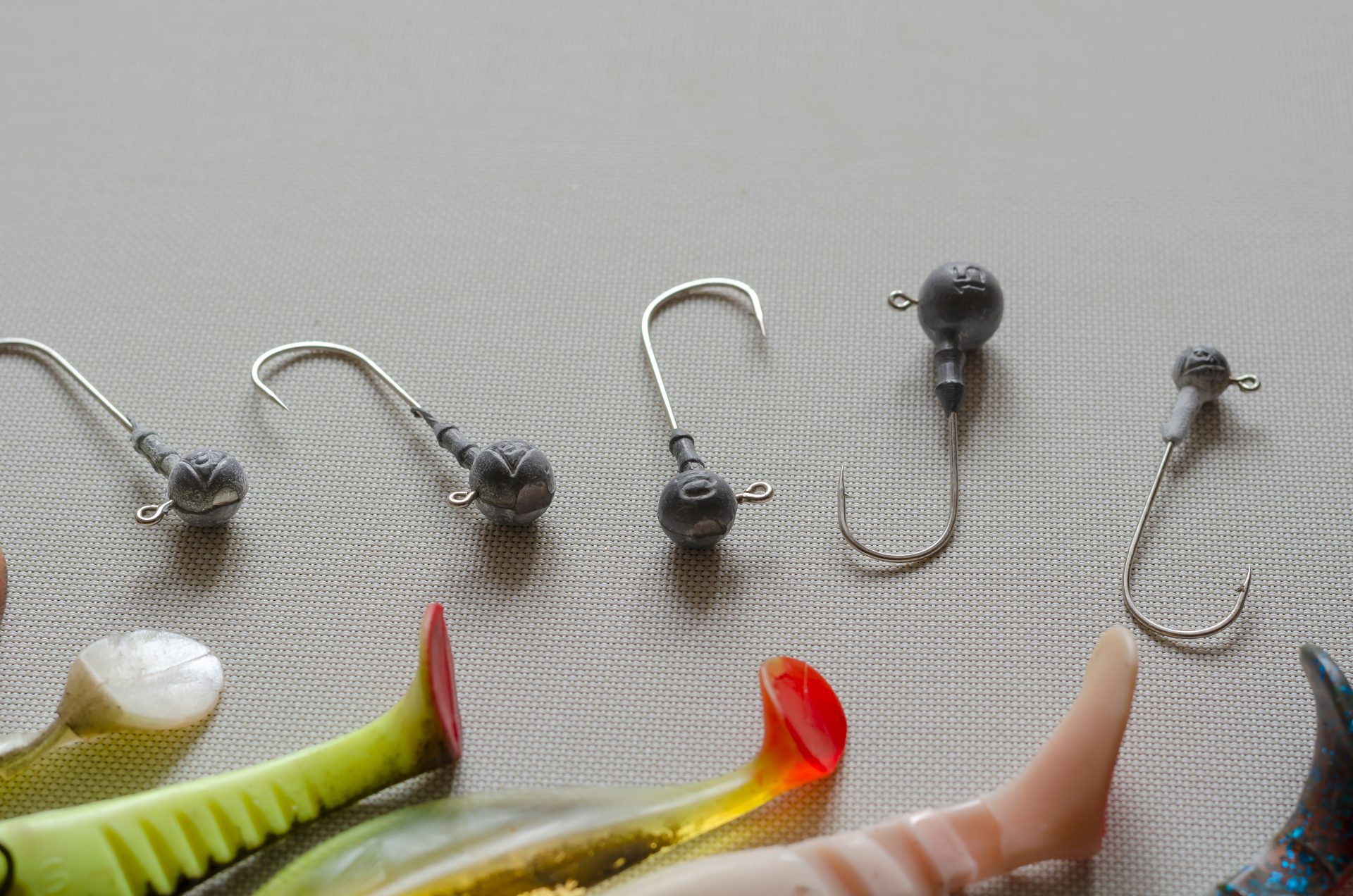Mastering Soft Plastics for Bass Fishing: Essential Tips
Soft plastics are a bit of a rite of passage for many bass anglers. They’re some of the least expensive baits, but they also require you to do all of the work when it comes to presenting them.
That’s a big step up from using something like a spinnerbait that does most of the work for you, but it’s something you can master with just a bit of work.
Here’s a complete guide to get you into the swing of tossing soft plastics for big bass.
What are Soft Plastics and What Do They Do?
You’re probably well aware of what soft plastic is. They’re some of the most common lure types on the market, they’re cheap, and they’re part of every top lure list in one form or another.
However, if you’re looking for tips, you’re probably missing out on some of the core concepts behind them.
Soft plastic lures are some of the most versatile lures on the market. They’re molded to look like specific types of bait, and since they’re plastic, they can be molded into just about anything with ease.
From worms to crawfish, and even detailed fish, there are all kinds of soft plastics available. These can be used with a variety of rigs, presented in all kinds of ways, and even work as supplements to many different types of rigid lures.
At the core of it, a soft plastic lure is supposed to replicate the profile and underwater movements of something in your target’s diet, though. However, whether or not the lure succeeds depends mostly on how you present it instead of the design of the lure itself. This is why they can be harder to become proficient with than other common lure types.
1. Match Soft Plastics to Your Target’s Diet
This is an easy task for bass anglers because bass will suck up pretty much anything in the lake. They’re apex predators. However, it’s a general rule of thumb that you want to use soft plastics that mimic things in your target’s natural diet.
The easiest way to do this with bass is to stick to the most common bass fishing lures. The various worm designs are all great, crawfish, flukes that are designed to look like small fish, and insect designs mimic vital parts of a bass’ diet in every part of the country.
However, some other lure types, such as lizards and certain creature baits, might not be relevant where you’re fishing. It’s highly unlikely that the largemouth bass in South Dakota have seen many lizards, after all. In contrast, if you’re fishing in Florida or Texas, a lizard-soft plastic might be exceptionally good.
Take time to learn about the food chain in your local ecosystem, and it can help you use soft plastics more effectively.
2. Match the Hatch
Even if you’re using soft plastics that are relevant to your target and the food chain in your area, you have to recognize when certain lures are going to be most effective.
For example, crawfish tend to be a big part of the food chain in the fall. So, saving your crawfish plastics until the fall bass fishing starts rather than tossing them all year round is a good idea.
This goes for more than just the profile of the lure, too. The color of the lure you’re using can be extremely useful if you match it to the hatch.
Using the crawfish example from earlier, fall crawfish tend to turn reddish-brown. So, if you were to use a color pattern that has lots of red and dark accents, you could more effectively match the hatch. In the spring and summer, blues and greens are more realistic.
Another example of this would be great with flukes. If you’re fishing in an area that has lots of minnows or silver shad, a silver fluke with lots of silver flakes is a great choice. With worms, purple, red, and blue tend to work extremely well.
The color doesn’t always need to be completely natural, and we’ll talk about that more shortly, but it can be a great starting point to choose colors that match the local ecosystem.
3. Focus on Presentation
This is one of the things that will take you the longest to master with soft plastic lures. When you use something like a crankbait or jerkbait, most of the action is dictated by the lure. Even the depth is self-regulated by the lure.
With soft plastic, you’re in control of everything. The way you reel, pause, twitch the tip, and rig it all dictate how that lure looks under the water. You also have to control your depth manually to hit different parts of the water column.
Unfortunately, there are so many soft plastic lures replicating so many different types of creatures that it would take a full book just to walk you through the basics for each option.
However, the core concept is to present the lure in a way that mimics the natural movements and behavior patterns of the bait you’re mimicking.
Again, we’ll use a crawfish as an example.
They move backward and hop across the bottom of the water. They don’t swim around at the top or move claw-first anywhere. To properly present a crawfish, you’d want to rig it so it gets dragged backward, give the lure plenty of time to sink to the bottom of the lake or pond, and then use a retrieval pattern that pulls up on the lure, reels in at a medium pace, and then pauses for it to sink again.
It’s more complicated to replicate fish because there are a lot of ways you can do it to achieve different effects. The best way is to practice in water where you can see what the lure is doing, and then commit that presentation to memory.
4. Focus on Easy Lures First
When you first start using soft plastics, don’t immediately use something that is going to require a lot of finesse and precise presentation to be successful. Start with the simpler lures.
U-tail grubs, trick worms, paddletail swimbaits, and similar options are all easy to use, give you plenty of room for error, and are proven to produce big bass.
When you’ve built your confidence and learned a lot about presenting a lure effectively, you can move on to more complicated lures like flukes, crawfish, creature baits, diving frogs, etc.
5. Explore Different Rigs
The rig you use is extremely important when it comes to soft plastic lures. Even with a soft plastic worm that’s very simple, the presentation can change dramatically between a Texas rig, free rig, or wacky rig.
A Texas rig makes it look like your lure is making a beeline for the bottom, and when you reel it in or twitch it around, the lure follows the bullet weight like it’s swimming back to you.
A free rig lets the lure wobble around a bit more randomly, shift based on the water movement and lure shape, and fall to the bottom more slowly once the weight sinks.
A wacky rig is exactly what it sounds like. It lets both ends flop around erratically and sink slowly to the bottom.
We only mentioned three rigs, but every rig has its distinct presentation, and they all work differently with different soft plastics.
6. Make Sure Your Worm Hooks are the Right Size
This is a big issue for a lot of beginner anglers. Most soft plastic rigs will require you to use a worm hook, and that hook will support two different parts of the lure.
For example, with a Texas rig, the part that leads the lure will be around the shank of the hook, and then the hook’s bend will support a spot somewhere along the body.
If your hook isn’t appropriately sized for your lure, it can leave too much of a tail dangling. If it’s too small, it can scrunch up the front part and make it look strange in the water.
Buy a variety of worm hooks to ensure you can rig up your lures effectively.
7. Use Your Soft Plastics as Jig Trailers
Jigs are some of the most popular lures in bass fishing. They’re simple, and different types of jigs work for different presentations without being difficult to learn.
However, while they’re great on their own, using soft plastic as a trailer can add a lot of action to the jig, and it can enhance its profile.
A good example of this is a classic football jig and craw combo. You take a football jig that is designed to roll over bottom hazards like rocks and tree limbs, and you thread a crawfish soft plastic onto the hook. The claws should hang out the back end.
This makes the crawfish presentation we mentioned earlier more realistic, the jig skirt beefs up its profile, and you don’t have to worry about snags as much.
You can also add paddletails to swimjigs, U-tail grubs are popular on most jigs, and there are lots of other combos to mess with.
This can be an easier way to use your soft plastics and build confidence with them until you start using soft-plastic-only rigs.
8. Try Exotic Colors
We know we spent a lot of time talking about matching the hatch and using colors that attract bass to do that, but sometimes, thinking outside of the box is the secret to success.
There might not be any bright pink worms that spark lemon-lime green, but tossing a soft plastic with that color pattern might be exactly what triggers the bass to strike.
If your naturally colored lures aren’t working, switch to something exotic. It might not look like real food, but just being strange enough to make a bass see it as a potential threat can trigger aggressive bites.
9. Bigger isn’t Always Better
When you’re going through the available soft lures at your local tackle shop or browsing Tackle Warehouse online, it can be tempting to look at big, 12-inch, worms and think they’re going to be what gets you your next bass, but you’ll often find that many smaller lures produce large bass all the time.
Start by using your standard 3-inch U-tails, 6-inch worms, and smaller crawfish and paddletails. They work better with standard equipment, are more accessible to bass of all sizes, and you’ll build your confidence quicker compared to lobbing the more specialized massive plastics.
10. Start with the Texas Rig
If we’re teaching someone how to start using soft plastic lures, the first thing we’re going to teach is the Texas rig.
There are a few reasons for this.
First, it’s extremely easy to understand how your lure is presenting under the water. The bullet weight in the front is dragging it directly behind it in the direction of your rod tip. If you’re paused, it’s moving toward the bottom at an angle. If you’re reeling or lifting your tip, it’s coming up and at an angle. It’s a lot easier to get the hang of.
It’s also very versatile. You can twitch it, reel it slow, reel it fast, pause at different intervals, lift it up and down in the column, and more.
Finally, it’s a weedless rig. So, you can confidently toss it around weeds and hazards without worrying about snags. With many of the other popular rigs, you’re going to feel encouraged to fish away from prime fishing spots just so you aren’t constantly pulling weeds off your lure or losing your lure to random stumps.
The Texas rig keeps you fishing and learning how to present soft plastics effectively.
11. Know When to Hang It Up
Finally, a few things break your confidence and make you hate a certain type of fishing more than going home without a single bite.
While learning how to use soft plastics effectively is a necessity for any serious bass angler, it can be a good idea to take a break if you’ve spent the bulk of your trip trying and failing, and just use what you’re comfortable with to get that one feel-good story you can take home and tell your fishing buddies.
It can take time to master soft plastics for bass fishing, and if you’re getting skunked, it can do more harm than good.
Newsletter Signup
Get Help with BassForecast
Learning to use soft plastics is crucial, but understanding the fishing conditions you’re in is just as important.
BassForecast fishing app can help with detailed maps of every waterway in the US, guides just like this for both beginners and advanced anglers, and real-time weather information.
Available on Play Store and App Store!







.png)
.png)